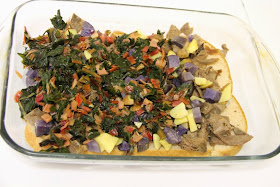Today we wanted to share our system for tracking chicken data in case any of you might find it useful or have suggestions for how to improve it. So, without further adieu, here is EggSpreadsheet.xlsx, version 1.0, (kindly hosted by OpenDrive).
 |
| The trends are kind of interesting. The open symbols correspond to
times when we weren't around to collect eggs forthe whole week, and we
didn't want to rope our chicken-care volunteers into our goofy
data collection experiment. From the left, the eggs/week started increasing as more
chickens reached laying age until mid-November, when production started
to fall off, probably with the decrease in day length. Then the chickens went on a tear in mid-December before shutting
it down for most of January. But this last week shows a real up-tick
again, so we better get ready! We're not sure why the big boost in
mid-December, but they seem to lay more when they're outside more and the
weather is warmer.
Also, our Ameraucana was a real good layer up until two days before the day length dropped below 10 hours (November 18), then she didn't lay a single egg until last week, two days after the day length crossed the 10-hour threshold again (January 24). Now she's laid five in the last week. That's consistency! |
 |
| In other chicken-related news, our well-traveled, but previously injured, Rhode Island Red has rejoined the flock. She let us know she was fully recovered by escaping from her tote, making messes around the house, and eating our newly-sprouted avocado tree. Also, we've been trying to figure out what type of chicken Big Chip is. She was a mystery bird (a.k.a. 'free rare breed') from McMurray Hatchery that looks like a Partridge Rock in terms of coloring and size (she kept pace with the Pioneer meat birds last spring), but her comb isn't quite the same, and she was a chipmunk-striped chick, which Rocks typically aren't (nor are they a 'rare breed'). Any ideas? Maybe a mutt from their top secret 'new meat breed' program? |
How do you keep track of your egg production and costs? Let us know in the comments section below!






























